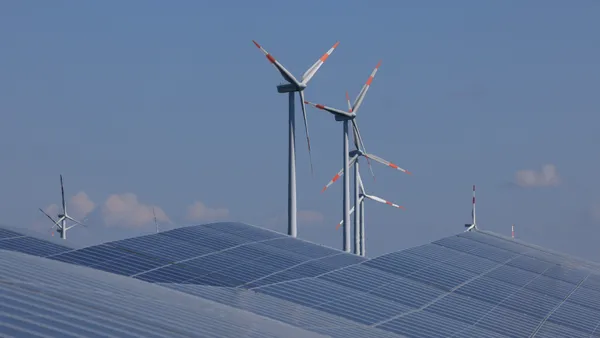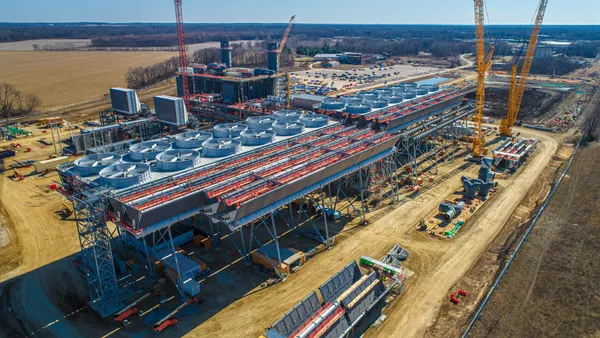Dive Brief:
- United States capacity additions over the next several decades will lag historical levels, and record amounts of the new generation will be renewable power, according to new projections from the U.S. Energy Information Administration.
- Capacity additions through 2017 will average about 17 GW annually, with about half of that being non-hydro renewable power.
- From 2018 to 2024 EIA estimates capacity additions will average less than 4 GW annually, significantly below the 26 GW added annually between 2000 and 2013.
Dive Insight:
The United States continues to add more generating capacity than it retires, but the rate of additions is slowing dramatically according to the EIA's Annual Energy Outlook 2015 reference case. Though noting the reference case does not include the impact of the proposed Clean Power Plan, EIA said total generating capacity in the U.S. will rise from 1,065 GW in 2013 to 1,261 GW in 2040.
"The amount of capacity added is more than three times the amount that is expected to retire, with 287 GW added and 90 GW retired," EIA said.
Capacity additions through 2017 are already under construction for the most part, and will be about half renewable power thanks to federal tax incentives and renewable standards, EIA said. Additions from 2018 to 2024 decline, as earlier additions will likely be sufficient to meet demand growth. From 2025 to 2040, EIA estimated average annual capacity additions will be primarily gas-fired and renewable technologies, and will average 12 GW per year.
EIA said gas-fired generation accounts for almost 60% of additions through 2040, with renewables making up most of the remainder. Nuclear generation will make up about 3% of the remaining capacity additions.















